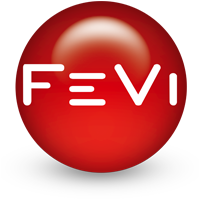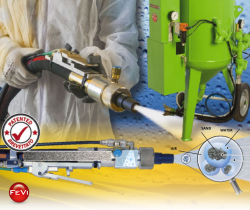Tired of raising dust?
Our solution to your problem is Water blast
Reading time: about 3 minutes
One of the most important problems encountered when sandblasting with a free jet is the creation of a large amount of dust.
The term "dust" does not have a precise scientific meaning; it generally means a solid reduced to powder or minute particles. When determining the level of hazard the size of the particles is just as important as the nature of the dust. Generally, the most dangerous types of dust are those composed of very small particles invisible to the naked eye, such as fine dust. Particles of this type are small enough to be inhaled, yet large enough to be trapped in the lung tissue instead of being exhaled.
Nuisance dusts: can be produced while handling materials such as:
- • flours/grains;
• bituminous substances;
• tobacco;
• sugar;
• paper;
• dried foods;
• concrete;
• sawdust;
• coffee and tea grains;
• carbon black (contained, for example, in copier/printer toner).
Generally these types of powders have only an irritating effect, but in concentrated form they can be hazardous to health. Hardwood dust is carcinogenic.
Where can we find them?
• cement dust on construction sites;
• various types of dust in ports, customs clearance warehouses and trader sites;
• copier/printer rooms.
Toxic or flammable dusts can be encountered in dangerous concentrations in places where bulk goods are loaded, unloaded or moved (e.g. grains, ores, coal, etc.).
What damage can dust cause?
Dusts generally cause damage to the lungs and respiratory system; some types of dusts can cause cancer.
What can we do to reduce risk?
For most types of dusts, including nuisance dusts, exposure limits have been set in health and safety regulations. Consult national documents and EU legislation in this regard.
However, since we probably have little or no control over the source of the dust, every precaution should be taken to reduce risks. In particular it is important to:
- • use a respirator or face mask;
• if possible work in a well-ventilated area;
• use equipment that limits the generation of dust;
• limit exposure to dust.
Fonte https://commission.europa.eu/index_it
Our solution for reducing dust during free jet blasting is Waterblast
The Waterblast multifunction sandblaster bases its operating principle on sand humidification.
Its main features are the following:
🟢• gradual and constant reduction of the amount of dust until it is completely eliminated.
🟢• decrease in compressed air consumption (up to around 25%) proportional to the increase in the amount of water added to the air-abrasive mixture.
The system also allows:
🟢• automatic interruption of the water flow when the sandblaster stops
🟢• the adjustment of the water quantity by the operator from the point where he/she is working
🟢• the constant water flow rate of 2.5 L./min. up to a maximum distance of 80 metres.
Watch the demo video on our YouTube channel










